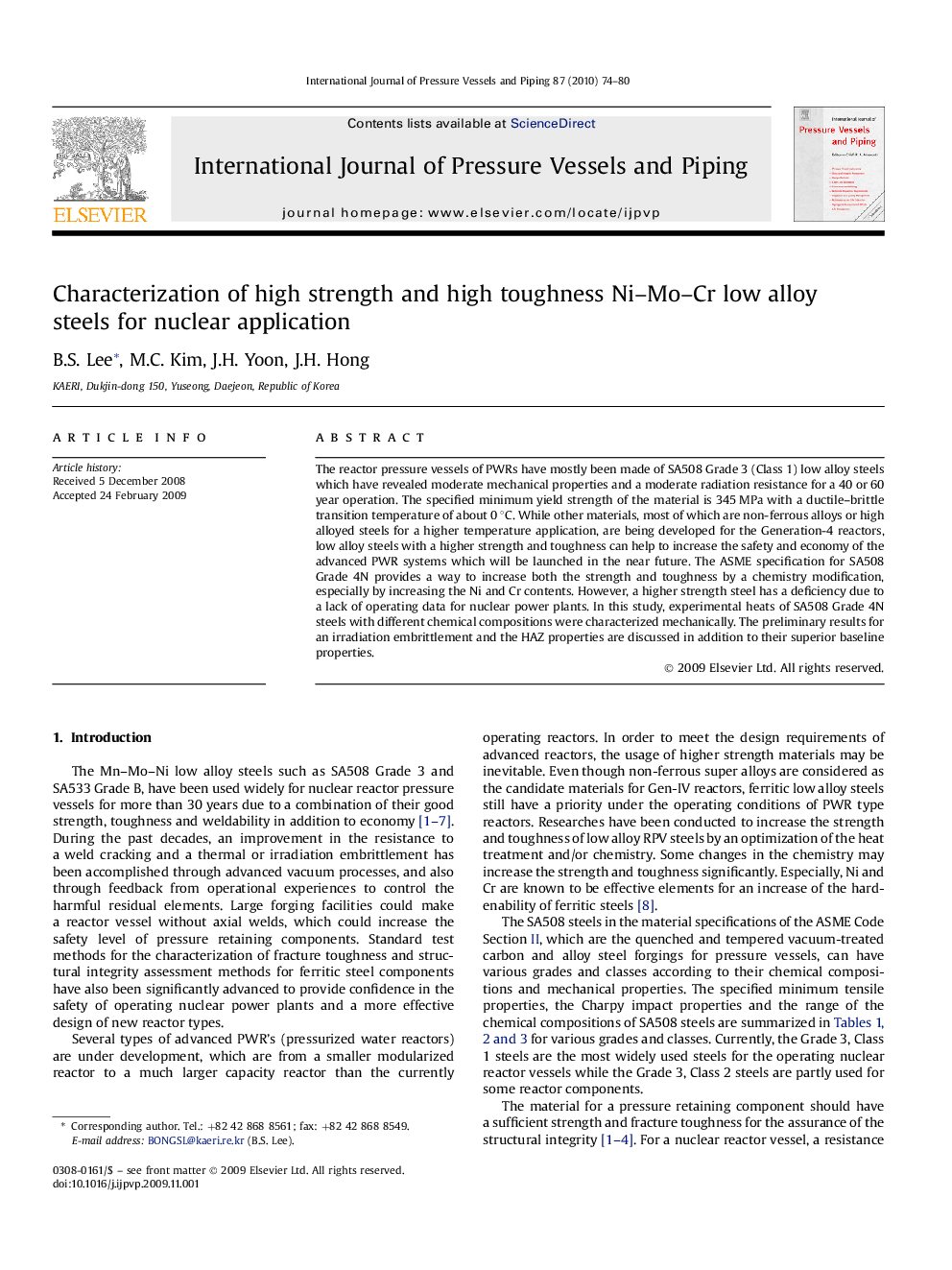| Article ID | Journal | Published Year | Pages | File Type |
|---|---|---|---|---|
| 790904 | International Journal of Pressure Vessels and Piping | 2010 | 7 Pages |
The reactor pressure vessels of PWRs have mostly been made of SA508 Grade 3 (Class 1) low alloy steels which have revealed moderate mechanical properties and a moderate radiation resistance for a 40 or 60 year operation. The specified minimum yield strength of the material is 345 MPa with a ductile–brittle transition temperature of about 0 °C. While other materials, most of which are non-ferrous alloys or high alloyed steels for a higher temperature application, are being developed for the Generation-4 reactors, low alloy steels with a higher strength and toughness can help to increase the safety and economy of the advanced PWR systems which will be launched in the near future. The ASME specification for SA508 Grade 4N provides a way to increase both the strength and toughness by a chemistry modification, especially by increasing the Ni and Cr contents. However, a higher strength steel has a deficiency due to a lack of operating data for nuclear power plants. In this study, experimental heats of SA508 Grade 4N steels with different chemical compositions were characterized mechanically. The preliminary results for an irradiation embrittlement and the HAZ properties are discussed in addition to their superior baseline properties.
